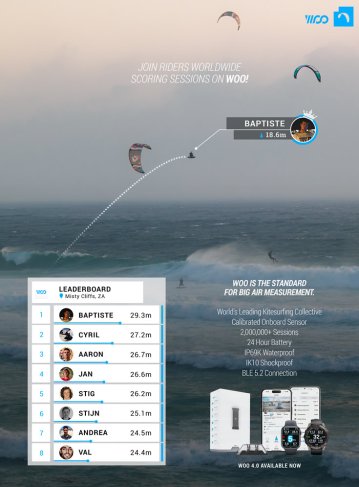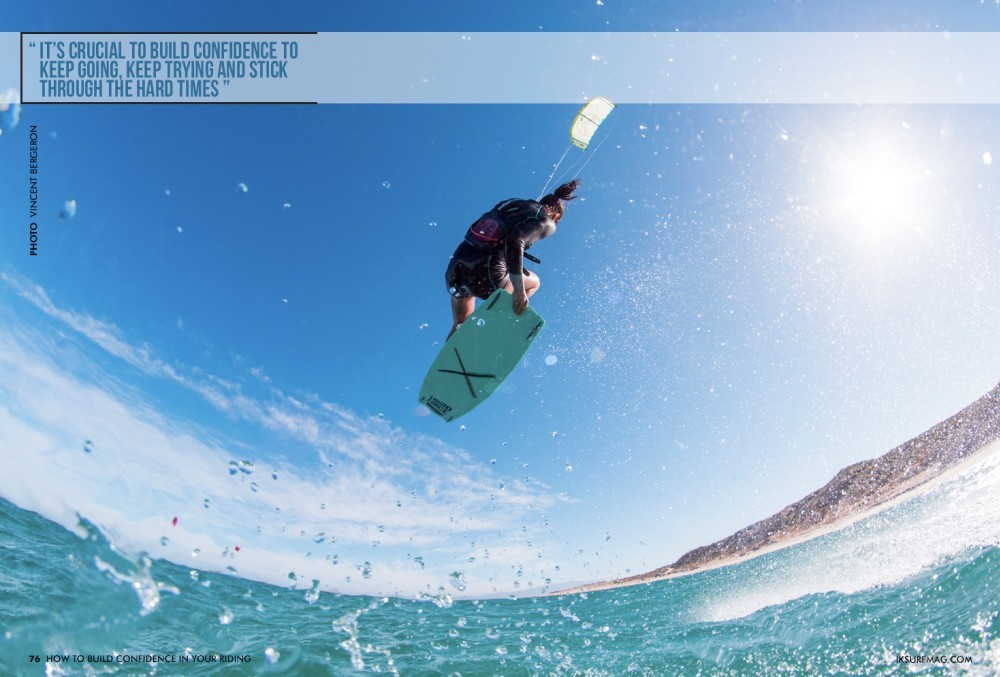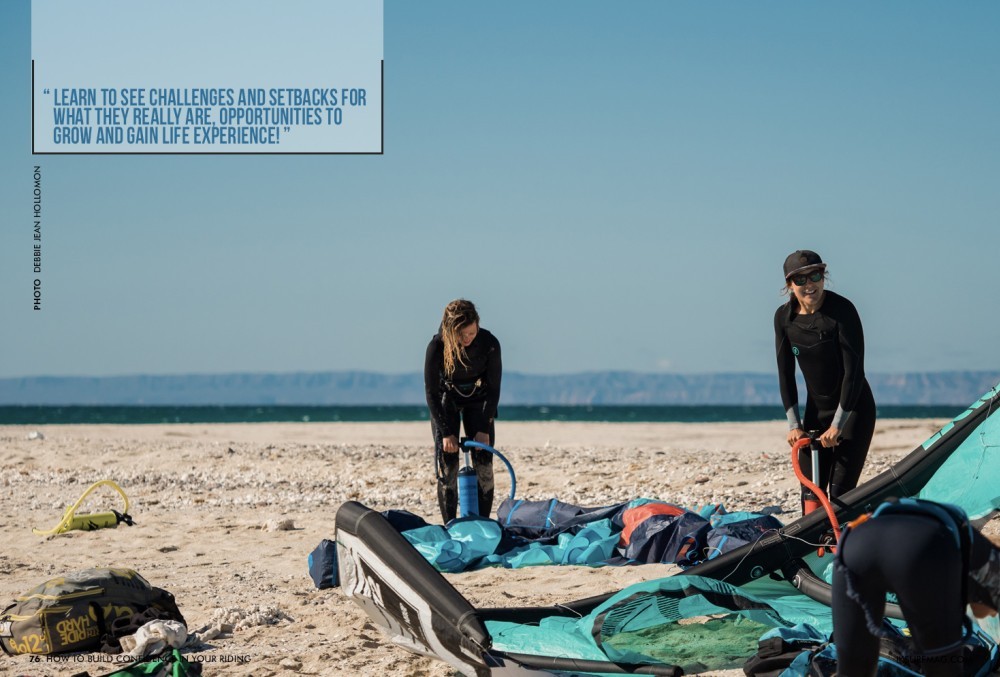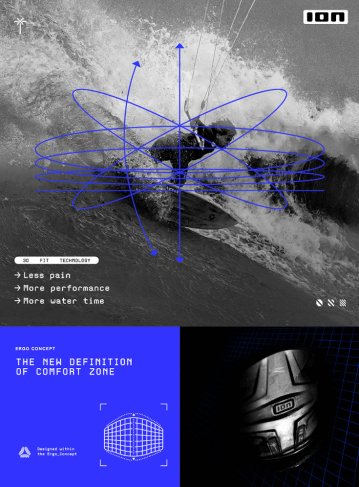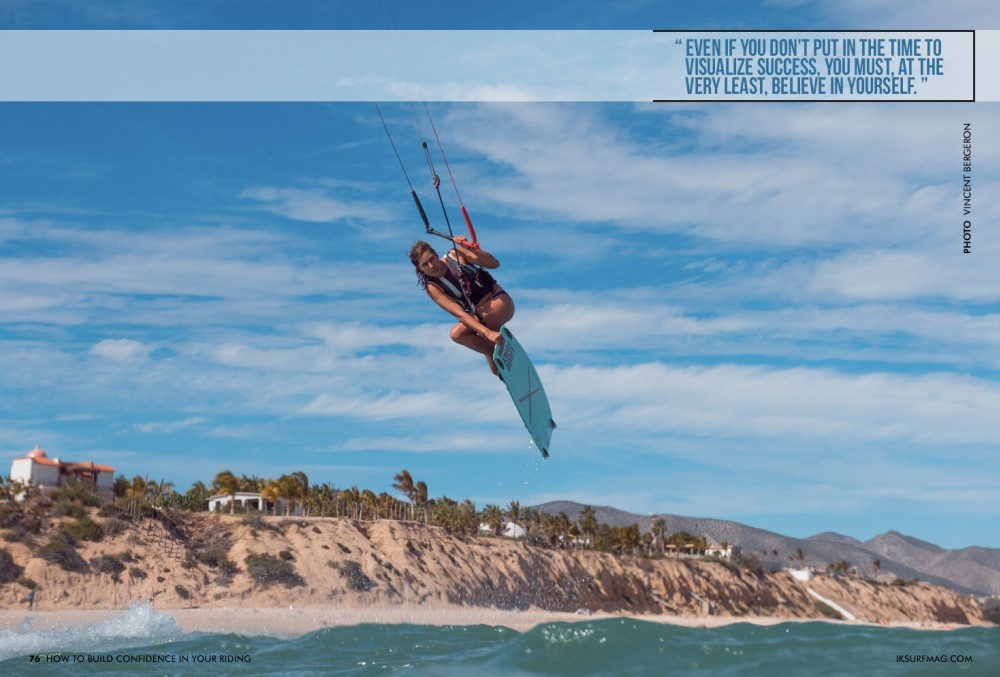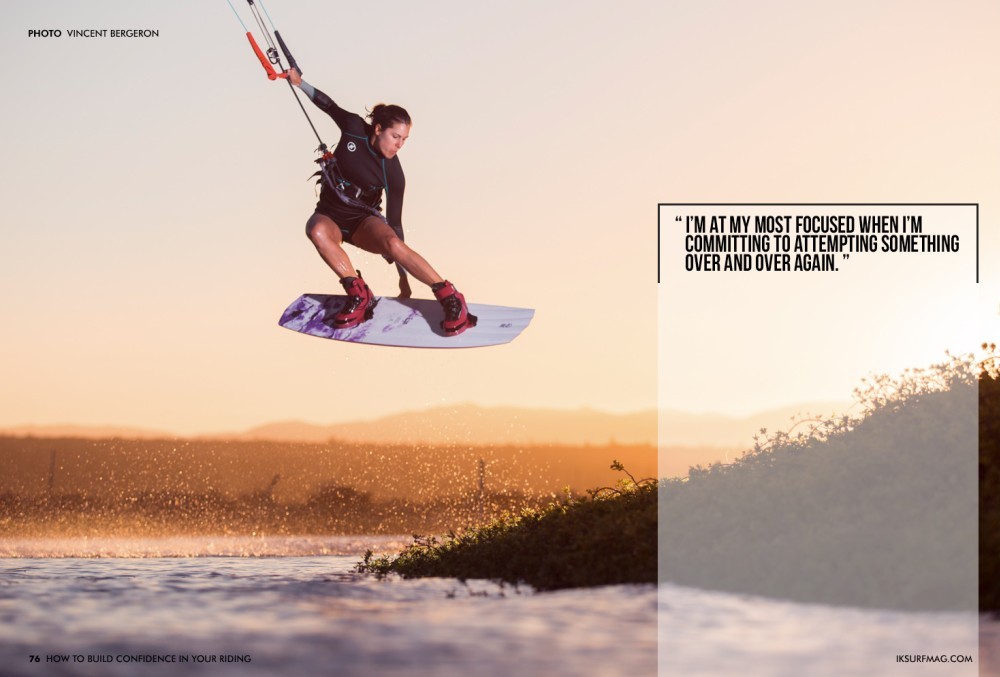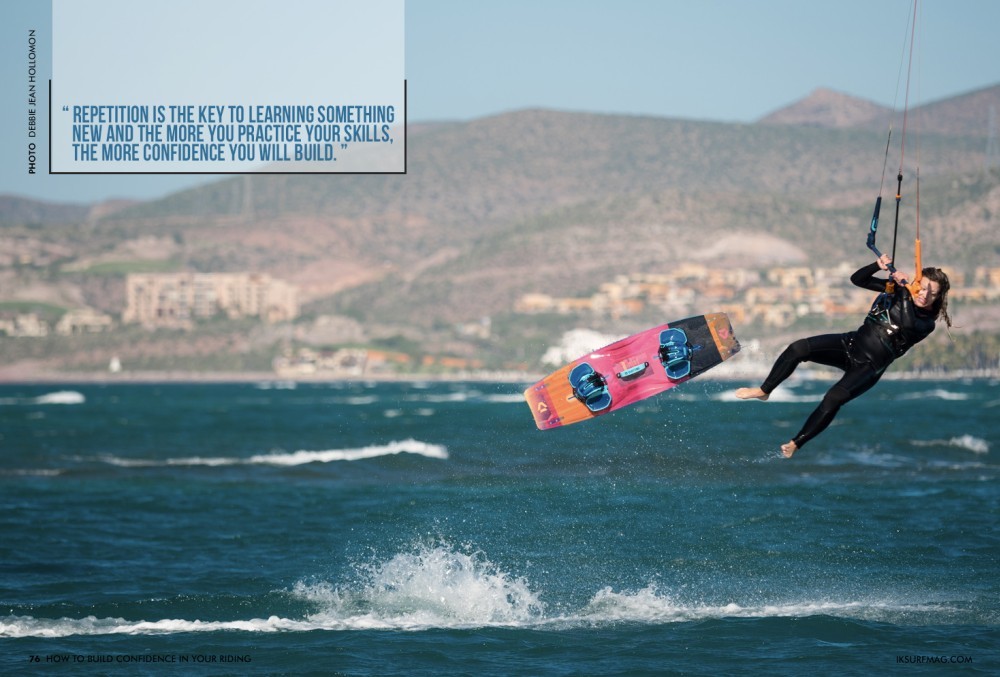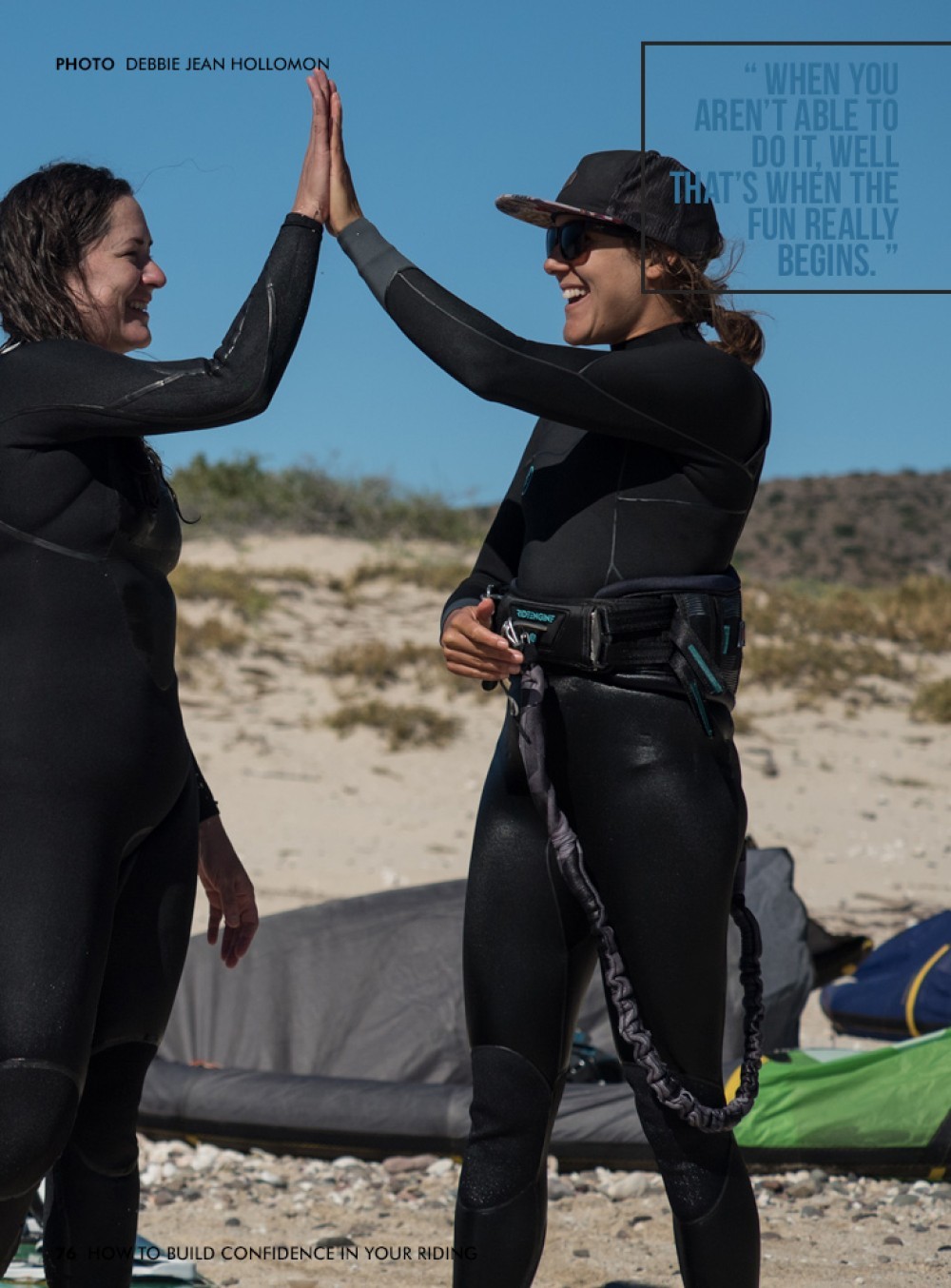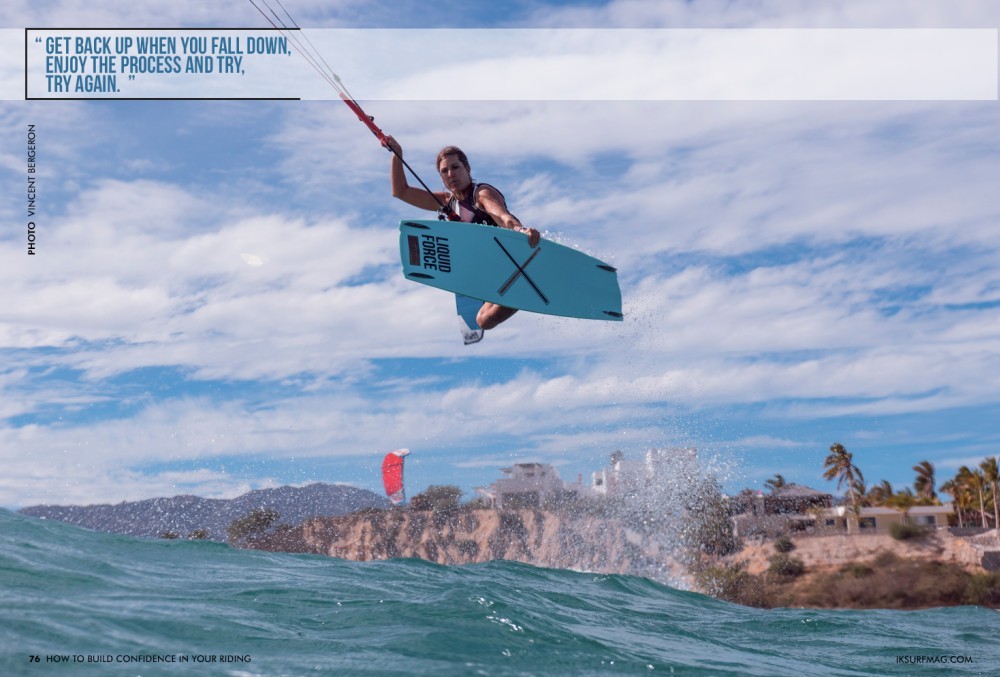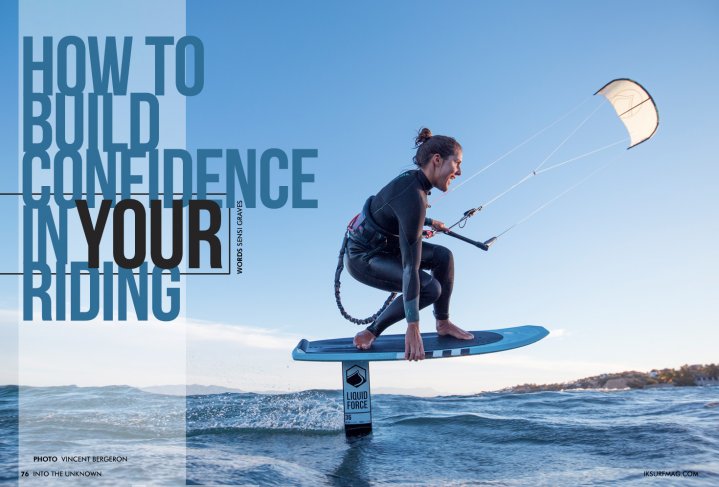
How To Build Confidence In YOUR Riding
Issue 76 / Wed 7th Aug, 2019
Sensi Graves looks at how kiteboarding is a never-ending process of progression, but sometimes that lightbulb moment seems a long time coming. Using various techniques, Sensi utilises will help you get better at everything you do under the kite!
Learning to kiteboard can be hard, and yet at the same time, it’s one of the sports with the steepest learning curves. You can be up and riding in three days! And from there the possibilities are endless! Toe-side riding, transitions, jumps, rolls, boosts to the moon! However, with endless possibilities comes immense pressure to keep on learning. Progressing in kiteboarding is something many of us are continually striving for. Whether that’s building our skill-set to be able to self-launch, or learning our first front-rolls, the bar is continuously moving higher and higher.
Progression and new experiences are what drive us, and are what we’re all seeking. It’s what keeps kiteboarding fun and exciting, whether that’s exploring a new spot to shred or working on a new trick. In kiteboarding, progression is often one catapult forward followed by a slow slide backwards. Usually, as kiteboarders, we’re able to learn something new in a session, and the next time you might go out, and somehow you’ve “lost” your trick. Your confidence can take a beating as you “swear that I’ve landed a backroll before”. It’s this feeling of not being able to or being stuck that hinders progression, and the secret is that most of this feeling is in the mind.
Progression is fuelled by confidence. Therefore it’s crucial to build confidence to keep going, keep trying and stick through the hard times, setbacks and crashes. It’s your confidence that will enable you to keep trying, keep getting after it and continue your progression in our beloved sport, even though it can be hard; extremely, frustratingly, even throw-your-bar-across-the-sand hard.
But let’s get back to the secret of progression: No one ever did anything without first believing that they could. Use the following tips to cultivate your confidence and go out there and kick some serious booty. Progression is on the horizon.
1. Embrace every failure as progression.
As I lamented earlier, learning to kiteboard can be extremely hard. Every failure feels like a massive setback. Learning to stay upwind, face-planting, and getting “stuck”, can all feel like enormous hurdles when you aren’t able to do them right away. But every self-rescue is an experience. Every second that you’re on the water, you’re progressing. Your mind and body are learning even when you don’t feel like it. Focus on your progress and keep moving forward. Learn to see challenges and setbacks for what they really are, opportunities to grow and gain life experience!
2. Practice visualization.
The practice of visualization has been used by athletes from Laird Hamilton to Tiger Woods; it’s been vital for their stratospheric success. The power of visualization is grounded in the fact that if you can’t see yourself doing something, you probably won’t get there. Visualization helps you imagine success instead of the obstacles that could potentially occur. If you focus on the challenges, you’ll feel less motivated. Obstacles can make a new trick feel unattainable. Focusing on actually landing the trick or having a great session will help you overcome those mental restraints and barriers.
By visualizing how the trick looks and how your body is going to look and feel as you do it, you start firing the necessary nerve pathways in your brain. You lay down the basis for making the trick happen. If your mind believes, your body will follow suit. Alternatively, if your mind doesn’t believe, chances are you won’t ever get there.
3. Believe in yourself.
Even if you don’t put in the time to visualize success, you must, at the very least, believe in yourself. You made it this far, didn’t you? Give yourself some props for even getting out there and trying. The flipside is what? You don’t try? If you don’t, we know where you’ll be at this time next year - still sucking (thank you Real Watersports for that one). Say your mantras, look at yourself in the mirror and tell yourself that you love yourself! You can be your biggest fan.
4. Watch a crash reel.
Crash reels from any sport are excellent reminders of how long it takes to get good at something and how long it takes to truly master something. We’re all in the same boat; we’re all in this together. Look at how much time people must spend before they are successful. Look at how many crashes a professional skateboarder endures before nailing the trick for his video part. I’ll give you a hint; it’s a heck of a lot. This serves as a reminder that you’ve got to keep getting back up. You can’t give up.
5. Repetition, repetition, repetition.
I’m at my most focused when I’m committing to attempting something over and over again. You get in a type of zone where everything else becomes irrelevant. You’re laser-focused and enjoying the moment. Repetition is the key to learning something new and the more you practice your skills, the more confidence you will build. At the start of your next session, pick a specific number of attempts you want to hit and go out there and start ticking them off your list.
6. Start small.
Start your session with the confidence-building technique of acknowledging every small success and building your base up from there. Celebrate the wins along the way. Laid out your lines correctly? Cue the happy dance. Navigated off the beach and now you’re riding around like a rockstar? Give me a heck, yes! Build from the ground up. No one expects you to throw a double backroll until you’ve learned how to do a single. And even if you have a double back roll in your bag of tricks, you’re better off successfully completing a single back roll to warm up both your body and your mind and prime yourself for further successes. Which leads me to my next hint...
7. Know when to take a break.
Kiteboarding can get extremely frustrating. You can become so focused on learning one thing that it’s all you can do. You’re in the laser-repetition zone! But after much-focused practice, when you aren’t able to do it, well that’s when the fun really begins. Insert expletives here. If you’re attempting a new skill or manoeuvre and just. Not. Quite. Getting it, then it’s time to take a breath, go into the beach and reset. If you get too frustrated, you’ll hinder progression. And if kiteboarding is no longer fun, well then maybe it’s time for a beer and a fresh attempt another day.
8. Be stoked on where you’re at.
It’s essential to have goals, both in life and in kiteboarding. Setting your sights to bigger and better things keeps you motivated, encourages drive and expands your skill-set. However, it’s equally important to enjoy the process and be stoked with where you’re at. Once you hit your goal, the bar will continue to move higher and higher, and if you’re not satisfied with where you’re at now, chances are, you won’t be happy when you get to your previously-held goal. The secret lies in being stoked on where you’re at, being thankful for your skills, and your ability to kiteboard AND continuing to set goals, reach for the moon and move forward in a way that feels awesome.
Kiteboarding is hard. Heck, being a human is hard. But the rewards of kiteboarding far outweigh the what-feels-like-near-drowning experiences. We keep coming back because we’re addicted to the sport and we’re addicted to learning more and more. The secret to progression is to build up your confidence. So, acknowledge your successes, give yourself a pat on the back, visualize success, get back up when you fall down, enjoy the process and try, try again. Go get ‘em, Tiger!
Videos
By Sensi Graves


